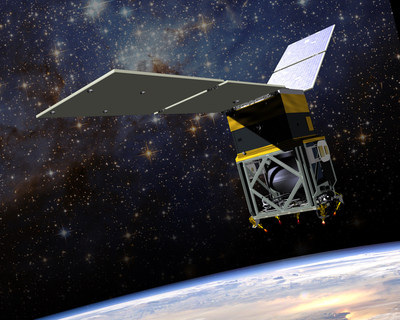NASA’s Green Propellant Infusion Mission (GPIM) has officially been commissioned and began on-orbit testing of a non-toxic, high-performance propellant. GPIM launched on June 25, 2019 on board a SpaceX Falcon Heavy rocket.
The small satellite, designed and built by Ball Aerospace, is NASA’s first opportunity to demonstrate the practical capabilities of a high-performance, environmentally benign “green” propellant in orbit. The propellant, called Ascent (formerly AF-M315E) is a Hydroxyl Ammonium Nitrate fuel and oxidizer monopropellant developed by the Air Force Research Laboratory. The non-toxic propellant provides fewer handling restrictions and preparations at launch facilities, thereby reducing time and cost. Ultimately, it is expected to provide better mission performance by propelling spacecraft to travel longer distances at faster speeds with less propellant.
As a subcontractor to Ball, Aerojet Rocketdyne designed and built the GPIM thrusters that provide propulsion for the spacecraft; and Plasma Processes supplied the high-temperature thruster combustion chambers and catalyst beds to Aerojet Rocketdyne.
During its scheduled 13-month mission, the GPIM satellite will use its propulsion to demonstrate on-orbit maneuvers including attitude control shifts, orbital inclination changing and orbit lowering, according to NASA.
